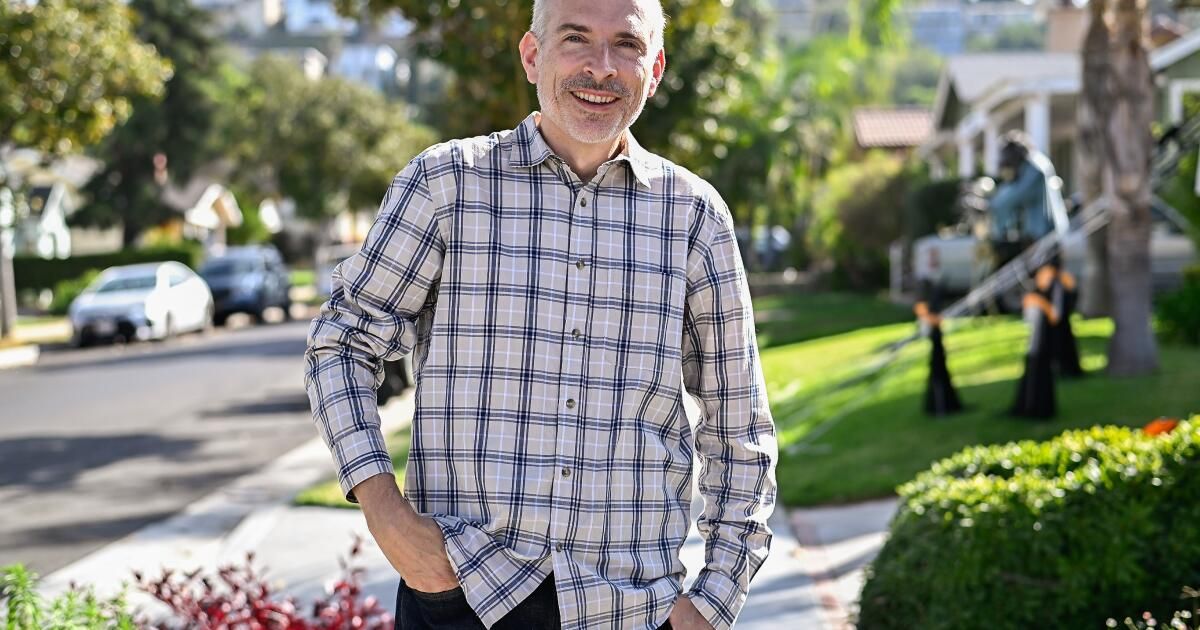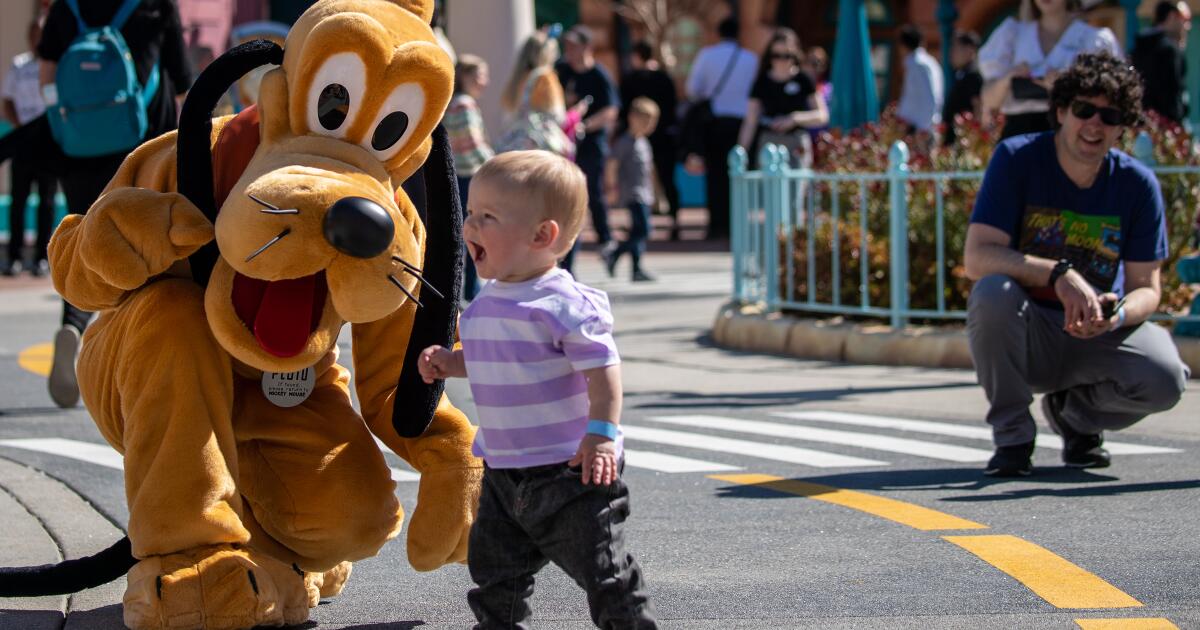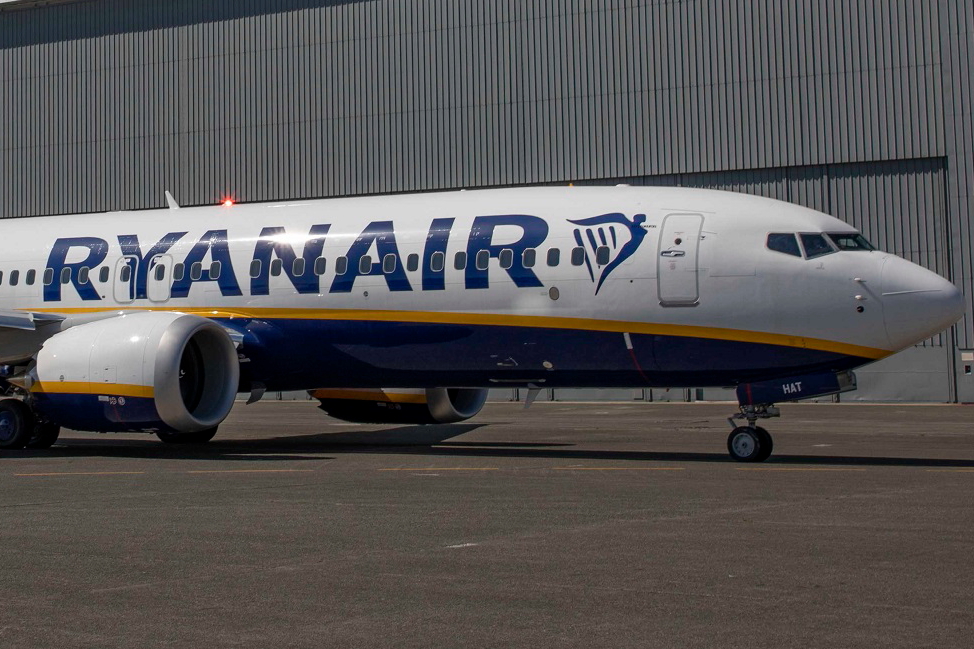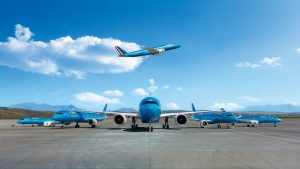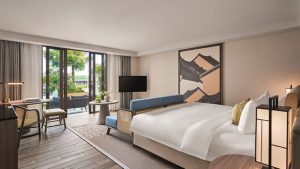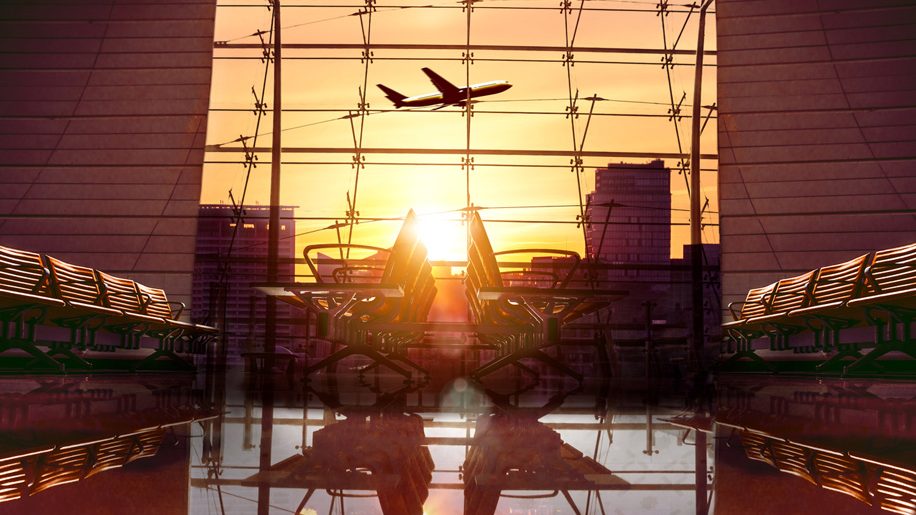The morning I met Michael Schneider at a quaint coffee shop in Glendale, it quickly became clear that he walked here. His sneakers are the first clue: white Nike sneakers, worn and stained with dirt. It's unseasonably hot this morning, and his sweat-stained forehead offers the second clue. His slim and exercised figure reinforces my suspicions.
Los Angeles is truly a walking city.
Explore our primer on the people and places keeping our sidewalks alive.
“I've probably walked over 10,000 steps already today,” he tells me proudly, checking the health data on his phone to be sure, and it's only 10:30 a.m.
In a city built for cars, Schneider is committed to exploring the city on foot, often leaving his Adams Hill home at 11 p.m., in the dark, to walk again after finishing the day's work. In fact, over the past two decades, Schneider, 51, has crossed Los Angeles on foot 18 times, covering nearly 300 miles in total during those trips. But he didn't do it alone.
Schneider is the founder of the Great Los Angeles Walk, an annual citywide event he started in 2006 to commemorate the 10th anniversary of his move to the city from Chicago. What started as a mobile, DIY Los Angeles celebration, with just his wife, a handful of friends, and several dozen readers of his blog, Franklin Avenue, has transformed into a local tradition, attracting up to 500 participants each November , the Saturday before Thanksgiving. . Each walk stretches along an iconic Los Angeles boulevard, traveling between 14 and 16 miles and stopping along the way to explore its sun-baked sidewalks and faded public murals, high-end furniture boutiques, cheap motels and historic churches, their food carts. full of fresh fruit and its bustling highway overpasses, from below.
The first Grand Walk, inspired by journalist Kevin Roderick's 2005 book, “Wilshire Boulevard: Grand Concourse of Los Angeles,” had participants walk the more than 15 miles of Wilshire, from downtown Los Angeles to the ocean. The only marketing Schneider did for the event was a simple blog post announcing the walk. About 40 people attended.
“It was almost a joke,” says Schneider, television editor at the trade publication Variety. “I had no idea how many people would come.”
The second walk, which attracted 100 people, took place on Pico Boulevard, inspired by Times food critic Jonathan Gold, who ate street food in his early 20s. Gold emailed Schneider with recommendations for food stops at that time. Since then, the event has spanned Santa Monica Boulevard, Beverly Boulevard, Melrose Avenue, Sunset Boulevard and Hollywood Boulevard, among many others.
In addition to being a great pre-vacation workout, the Big Walk debunks ever-lingering beliefs that Los Angeles is not a walkable city and that its physical sprawl impedes the ability to build community. Dozens of people met during the Great Walk, including Westwood residents Cat and Steve Whalen, who ended up getting married in 2023. They still do the walk every year.
“I remember bonding over the architecture of this former public storage facility,” Cat Whalen said of meeting her husband in 2016. “It's an event that combines our love of walking and urban landscapes and architecture and, of course, There is the social component. .”
Over the years, participants range from babies in strollers to residents over 80 years old. Attendees arrive alone or with a community group. Since 2017, long-distance swimmer Diana Nyad has been coming with members of her nonprofit EverWalk, which encourages walking for health and human connection. Walkers have traveled from as far away as Amsterdam and Japan to join the festivities; One man travels each year from Santa Fe, New Mexico, to participate, barefoot. It has become part of the colorful fabric of the event.
“I always meet him halfway,” Schneider says. “He has his camera and he is barefoot. That's precisely what he does.”
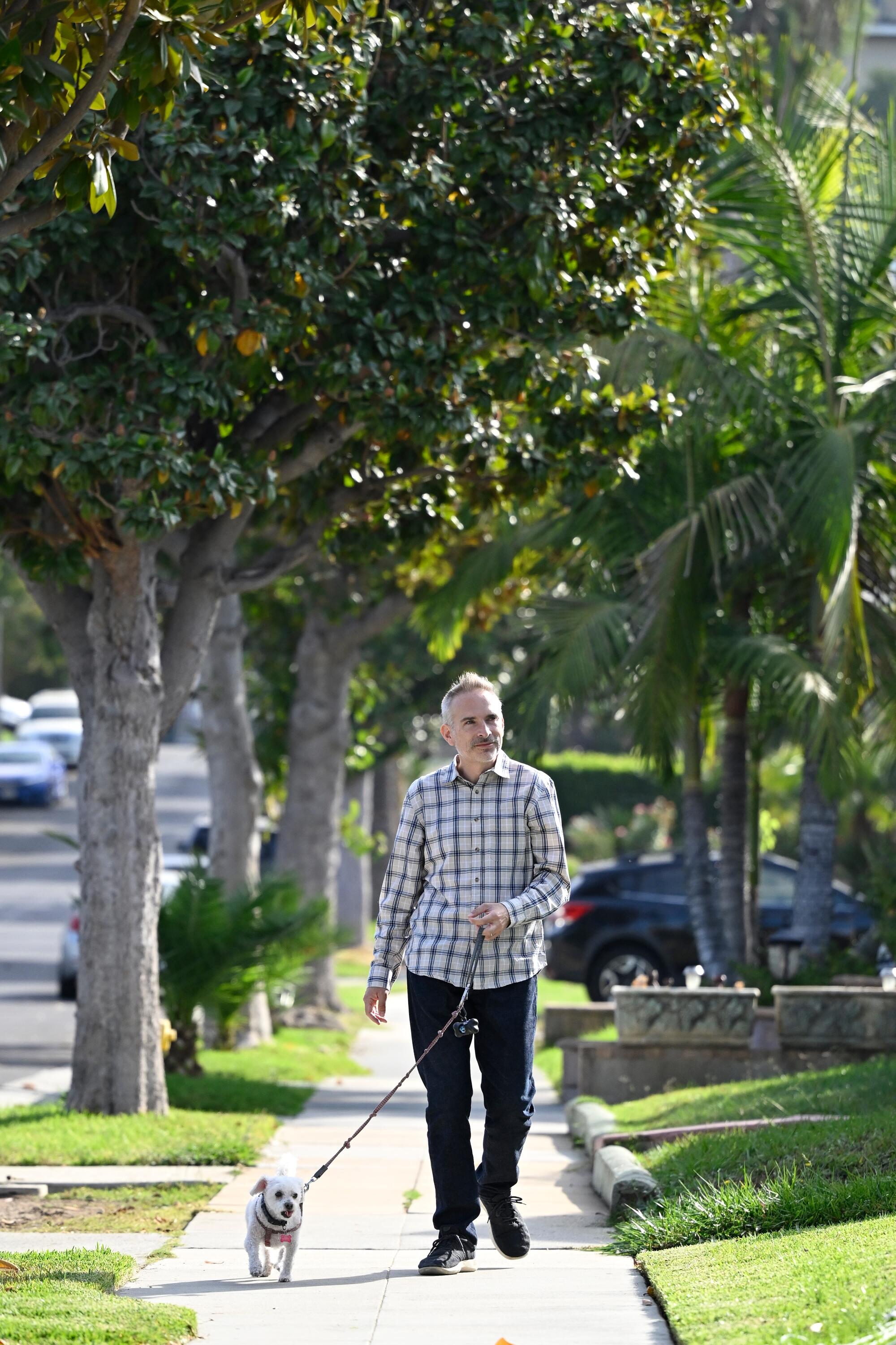
Michael Schneider with his dog, Jacks. Schneider founded the Great Los Angeles Walk in 2006.
(Robert Hanashiro/for The Times)
The Great Walk has been covered by blogs, television stations and local newspapers, including The Times. But less has been written about Schneider himself, who has accumulated nearly 20 years of knowledge while wandering the city's peaks and valleys.
Sitting in the cafeteria, Schneider looks like a suburban dad. He sports a stylish gray goatee and a zip-up hoodie, and takes every opportunity to brag about his two sons, ages 19 and 15, who have joined the hike nearly every year of their lives. The oldest participated for the first time when he was one and a half years old and the youngest when he was 3 months old.
But Schneider's normative exterior belies an undercurrent of intensity: It takes a particular, obsessive mindset to conceive and execute such an ambitious public expedition every year for two decades. (The Great Walk even continued during the pandemic.) Not to mention chronicling those trips in detailed blog posts, which are meticulously archived online. It requires a passion for cities, urban history and, perhaps, cartography; affinity for architecture and urban design; a love of community; and a knack for numbers. During our interview, Schneider repeatedly referred to statistics from his Noom weight loss app, and his cornflower blue eyes sparkled as he discussed caloric intake versus exercise expenditure in steps and miles.
In short, he is a collector. Of miles and health statistics, of vinyl records, of books about Los Angeles and of people. He first developed the habit as an “Air Force brat” kid, moving with his family between the Philippines, Oklahoma and Hawaii when he began obsessively accumulating information about the television business.
“I was that kid, 7 years old, who knew who Ted Turner was,” Schneider says, laughing. “I collected TV guides for whatever city we traveled through on vacation.”
After college at Northwestern and a year working between Chicago and Washington, D.C., Schneider moved to Los Angeles in 1996 with the television trade publication Electronic Media. In 1999, he got a job as a reporter at Variety and met his wife, Maria. He didn't exercise much, but she liked to walk. They spent their first dates exploring the city on foot, including walking tours of the downtown Los Angeles Conservancy and hikes in Griffith Park. Schneider fell in love with the history of Los Angeles and found that walking along its concrete stretches helped him feel more rooted in the city.
“When I first came to Los Angeles, I thought: Where is the core?” he says. “I didn't understand why people didn't know where to congregate. Now I understand it. They are all these different nuclei.”
Schneider has also collected some strange and serendipitous moments from the Great Walk. The event has seen weddings in progress, film crews and even burning buildings. Once, in 2009, the group stopped by the Nate Holden Performing Arts Center on Washington Boulevard and Magic Johnson appeared at the window to cheer them on. Two years earlier, on Pico Boulevard, a crane holding a sign fell and chaos ensued.
“Traffic was stopped, the police were everywhere, and no one could get through,” Schneider recalls. “But here we were, just walking.”
Schneider makes no money from the Great Walk; It is free for participants and does not pay to advertise the event. In recent years, there have been sponsors, including The Times, who might offer you free advertising, for example, or hand out water in exchange for a mention on the blog.
“But there is no business model,” says Schneider. “We are not an official organization. “This is just a grassroots group of people getting together to walk.”
Nineteen years of exploring Los Angeles on foot has given Schneider a rare panoramic view of the city, from a practical perspective. And he has had to modify the walk as the city around him has transformed.
“In recent years, obviously, there have been a lot more homeless people on the streets, as well as more garbage,” he says. “So I've been conscious of trying to pick streets where it's less of an issue.”
The construction boom in the city has also been particularly notable, he says.
“The amount of changes we have seen in recent years in development is positive. More homes, more buildings. But it's also sad when you pass by and that historic building, like the Ambassador [Hotel]It no longer exists, that is negative,” he says.
Schneider begins each Grand Walk at an iconic location, such as the Walt Disney Concert Hall, the Shrine Auditorium, or the Exposition Park Rose Garden, where there is usually a guest speaker who gives a pep talk. Roderick and Nyad have taken up the megaphone, as have artist and urban explorer Charles Phoenix and journalist and historical preservationist Chris Nichols. And there is always an “after party” at a location near the finish line.

2023 photo of Michael Schneider with long-distance swimmer Diana Nyad.
(Michael Schneider)
This year's walk will honor Schneider's family. He has a son at UCLA and a nephew at USC. So the walk will begin downtown at the Los Angeles Memorial Coliseum in Exposition Park near the USC campus and end on the UCLA campus at the Bruin statue. Between those points, the 14.2-mile walk will traverse parts of Vermont Avenue, Washington Boulevard, Culver Boulevard, Overland Avenue, Pico Boulevard and Westwood Boulevard.
“In recent years, it just so happens that the Saturday before Thanksgiving is the day of the USC-UCLA game,” Schneider says. “I thought, Okay, this is too good. We have to do it.”
Where will the Great Walk take place next year, marking its 20th anniversary?
“Back to Wilshire,” Schneider says without pause. “It's going to have to be the OG.”
While the Great Los Angeles Walk may be associated with exercise, Schnieder repeatedly reminds participants that the goal is to go slow.
“It's about taking your time,” he says. “Go into a store you've never seen, take the time to look at a sculpture, stop at that church. The key is to feel like you've learned more about Los Angeles. I still learn things. “I still see things I’ve never seen before.”
When our conversation ends, Schneider does what he's always done. He walks out the door and starts walking.


